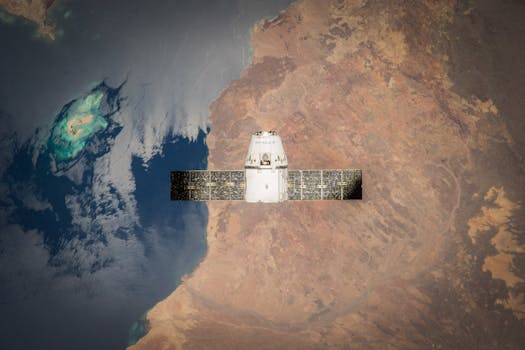The Rise of Mega-Constellations: Latest Updates in Satellite Telecommunications

The Rise of Mega-Constellations: Latest Updates in Satellite Telecommunications
The Rise of Mega-Constellations: Latest Updates in Satellite Telecommunications is an exciting topic in the field of space technology. The rise of mega-constellations is revolutionizing the field of satellite telecommunications, with companies like SpaceX and Amazon launching thousands of satellites into orbit to provide global internet coverage. This new era of satellite technology has the potential to bring high-speed internet to remote and underserved areas around the world, bridging the digital divide and enabling new opportunities for economic growth and development.
Mega-constellations are vast networks of satellites that work together to provide global coverage, with each satellite communicating with others to form a web of connectivity. These constellations are designed to be highly efficient, using advanced technologies such as phased array antennas and laser-based communication systems to provide high-speed data transfer. The development of mega-constellations is a complex and challenging task, requiring significant investments in research and development, manufacturing, and launch capabilities.
History of Satellite Telecommunications
The concept of satellite telecommunications dates back to the 1960s, when the first commercial communications satellites were launched into orbit. These early satellites were used for television broadcasting, telephone communications, and data transfer, but they were limited in their capacity and coverage. Over the years, satellite technology has evolved significantly, with advances in materials science, propulsion systems, and digital signal processing enabling the development of more powerful and efficient satellites.
In recent years, the rise of mega-constellations has marked a new era in satellite telecommunications. Companies like SpaceX, Amazon, and OneWeb are launching thousands of satellites into orbit, with the goal of providing global internet coverage and bridging the digital divide. These constellations are designed to be highly scalable, with the ability to add new satellites and upgrade existing ones as needed to meet growing demand for bandwidth and connectivity.
Benefits and Challenges of Mega-Constellations
The benefits of mega-constellations are numerous, including the ability to provide high-speed internet to remote and underserved areas, enabling new opportunities for economic growth and development. Mega-constellations can also provide backup connectivity during natural disasters or network outages, ensuring that critical communications systems remain operational. Additionally, mega-constellations can enable new applications such as IoT, 5G, and precision agriculture, which require high-speed, low-latency connectivity.
However, the development and deployment of mega-constellations also pose significant challenges, including the risk of space debris, radio frequency interference, and cybersecurity threats. The launch of thousands of satellites into orbit also raises concerns about the environmental impact of space activities, including the potential for collisions and the degradation of the orbital environment. Furthermore, the regulatory framework for mega-constellations is still evolving, with ongoing debates about issues such as spectrum allocation, orbital slots, and liability for space debris.
Latest Updates and Developments
Recently, there have been several significant developments in the field of mega-constellations. In 2020, SpaceX launched its first batch of Starlink satellites, marking a major milestone in the development of its mega-constellation. Amazon has also announced plans to launch its own mega-constellation, called Kuiper Systems, which will provide high-speed internet to underserved areas around the world. OneWeb has also launched its first batch of satellites, with plans to provide global internet coverage by 2025.
Additionally, there have been significant advances in satellite technology, including the development of new materials, propulsion systems, and digital signal processing techniques. The use of artificial intelligence and machine learning is also becoming more prevalent in satellite telecommunications, enabling the development of more efficient and autonomous satellite systems. The rise of mega-constellations is also driving innovation in the field of space debris removal, with several companies developing new technologies to mitigate the risk of collisions and orbital debris.


